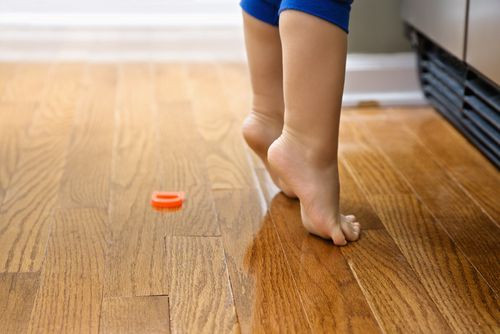Magnets Threatening Child Safety, As Pediatric Injuries From Swallowing Toys And Jewelry On The Rise

Who didn’t love magnets as a kid? They were pure magic — the way they’d stick onto the radiator or anything metal, and if you had two, you could use one to move the other around — without them ever touching! These days, magnets are often incorporated into toys and jewelry, except these are not the magnets of yesteryear; today’s magnets are new and improved, made of neodymium-iron-boron and along with greater strength packed into smaller dimensions, they’ve become more accessible, too. Unfortunately, a new study finds, this wider availability of small magnets has increased the number of childhood injuries, including, in some cases, even death. “It is worth reporting that of the children requiring surgical intervention, all 6 were males,” wrote the authors in their published research, which appears in The Journal of Pediatrics.
To understand the potential dangers of magnets, Dr. Matt Strickland and his co-researchers at the Hospital for Sick Children (SickKids), Canada's largest children's hospital, reviewed all cases of “foreign body ingestion” seen in that hospital’s emergency room between April 2002 and December 2012. Then, they narrowed their search down to suspected or confirmed magnet swallowing. "We chose to limit our scope to the alimentary tract because the majority of serious harm from magnets arises from perforations and fistulae of the stomach, small bowel, and colon," said Strickland in a press release. Next, they divided their study into two separate time periods: visits to the ER during 2002-2009 and visits during 2010-2012, after new, small-and-spherical magnet sets — the average size of magnets decreased approximately 70 percent at this point — were introduced to the market in 2009.
What did the researchers discover? Of 2,722 visits for foreign body ingestions, 94 were children who had swallowed magnets. Of those, 30 had been confirmed as swallowing multiple magnets. Worse, the researchers found that overall magnet ingestions tripled from 2002-2009 to 2010-2012. Plus, the incidence of injuries involving multiple magnets increased almost 10-fold between the two time periods. Six cases required surgery for potential imminent bowel perforation or even sepsis.
Most concerning to Strickland was "…the increased number of high-risk injuries featuring multiple, smaller magnets." Despite new labeling requirements, product recalls, toy standards, and safety advisories issued in the past 10 years, the fact is there are many products containing magnets already in homes far and wide, so Strickland believes educating parents and their children on the dangers of magnetic toys is most important.
Source: Strickland M, Rosenfeld D, Fecteau A. Magnetic foreign body injuries: A large pediatric hospital experience. The Journal of Pediatrics. 2014.
Published by Medicaldaily.com



























